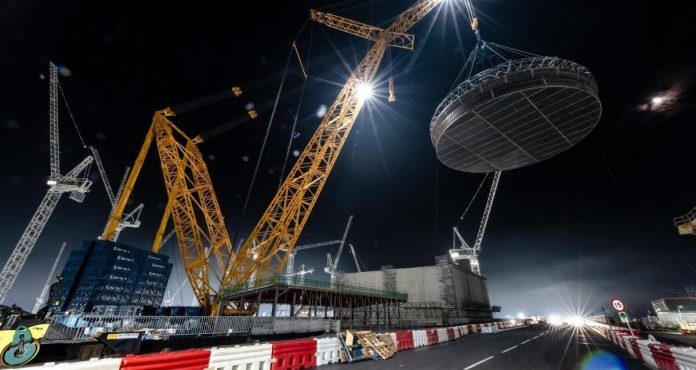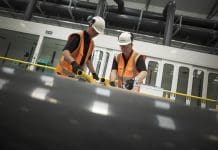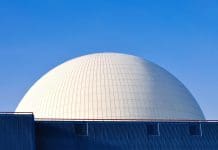The Hinkley Point C nuclear power plant will generate less CO2 emissions than other clean energy sources, and generate up to 7% of the UK’s total electricity
Once commissioned, the energy produced by Hinkley Point C will generate even less CO2 emissions than other clean energy sources such as wind and solar, and will contribute up to 7% of the UK’s electricity needs.
In total, approximately six million homes will be supplied with the plant’s power.
Compared to a gas-fired plant, Hinkley Point C will save 9 million tons of CO2 emissions annually and around 600 million tons of CO2 over its lifetime.
The environmental impact of construction is also being reduced by using recycled steel for 98% of the steel used in the plant’s reinforcement.
64% of construction value generated by Hinkley Point C will go to UK companies
Hinkley Point C will create 25,000 jobs and 1,000 apprenticeships, with 64% of the construction value generated going to UK companies.
The SGC-250 ground-mounted crane, also known as “Big Carl”, will help to construct the reactor in the channel, lifting loads from 10 to 1,600 tons.
The crane plays a major role in the construction of the power plant, placing more than 700 heavy parts.
The loads vary from precast concrete elements to pipe sections, steel rings and machinery equipment with weights ranging from 10 to 1,600 tons.
The SGC-250 will also lift five major parts of the steel casing and the containment dome of each unit.
The power plant will also improve biodiversity in the surrounding areas
The Hinkley Point C nuclear power plant will also aid in the improvement of biodiversity in surrounding areas, with £540,000 in donations to various environmental projects.
64,000 trees and shrubs have been planted on and nearby the site.
The land at the southern end of the complex has also been restored so that it can be enjoyed by the local residents. Having been originally agricultural land, it has become an area much richer in biodiversity.
The space has been intentionally designed and landscaped to increase biodiversity, attracting a wide variety of fauna and flora.

















